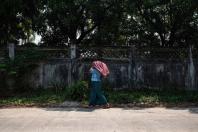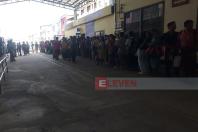Inquirer.net / ANN
Three months after losing their livelihoods, jeepney drivers and operators are still on tenterhooks waiting for the go-signal from authorities to let them ply their routes. The ban on jeepneys during the lockdown was premised on the need to maintain “social distancing,” with these “traditional” forms of transport deemed inefficient since they could only carry a small number of passengers and could further spread the virus due to the close quarters.
Instead, more “efficient” transport was eventually allowed: trains, taxis, and buses. Still, commuters struggled to find space for themselves. This is because, according to a news report in this paper, transportation authorities “minded only the belt highway Edsa and selected routes, leaving inner-city routes along which thousands of businesses are located without public transportation.”
The problem, as the report points out: “Those routes are served by jeepneys, which operate round the clock, unlike the buses and the air-conditioned minibuses that the government calls ‘modern jeepneys.’” The resulting shortage led to chaos in the streets, with workers forced to jostle with each other, while others resorted to even more “traditional” ways of getting around: motorcycles, bicycles, or on foot.
In an online House hearing earlier this week, Land Transportation Franchising and Regulatory Board Chair Martin Delgra said that UV Express vans would be allowed to operate on Monday, but gave no date for the resumption of jeepney operations. Days later, presidential spokesperson Harry Roque turned the screws tighter, declaring that jeepneys would be allowed only if public utility vehicles currently in use were not enough, and only if the jeepneys would be deemed “roadworthy.”
This led Bayan Muna Rep. Ferdinand Gaite to air his suspicions that the coronavirus controls were being used “to advance a program to modernize public transport and phase out the jeepneys and rake in profits from it.” Indeed, even before the COVID-19 pandemic, the jeepney sector had been crying foul over the “modern” jeepneys the administration was pushing.
Drivers’ and operators’ groups were incensed at the high costs of the vehicles, which they would have to amortize for years. “Please stop calling it (the) Jeepney Modernization Program,” said former solicitor general Florin Hilbay in a tweet. “It’s the forcible dismissal of jeepney drivers who are left with no protection and forced to beg because this government is using this pandemic to favor an expensive phaseout and increase the cost of public transportation.”
The ban on public jeepneys has resulted in crushing hardship and hunger for the drivers, many of whom have resorted to begging on the streets, asking for alms from passing motorists. A photo of Alberto Manuel Jr. — old and bent, arms outstretched to passersby along Rizal Avenue in Manila, a handwritten placard behind him saying “Konting tulong lang po…” but also not forgetting to greet “Happy Father’s Day po sa kapwa ko tatay, salamat po”—went viral and sparked a donation drive for Manuel and some 60-70 other drivers in his group. Other drivers have taken the drastic step of living in their vehicles, oftentimes with their families, since they have been driven out of their homes for failing to pay rent.
Their plight has caught the attention of Vice President Leni Robredo, who says that pushing jeepney modernization will further burden drivers since it would cost millions for them to make the switch, even as the promised government subsidy is only about 5 percent. In addition, according to think tank Ibon Foundation, traditional open-air jeepneys may even be a safer form of public transport.
Studies show that air-conditioned interiors, such as those on the “modern” jeepneys and some buses, are conducive to the spread of the coronavirus. Many jeepney drivers have, in fact, exerted effort to conform to government regulations by installing plastic barriers and other physical-distancing features in their vehicles. But they continue to be rendered idle, and desperate, by an unmoved government.
Transport group Piston likewise questions the government’s penchant for “experimenting” with transport reform even in these times of crisis. Jeepneys, the group contends, play a “crucial role” since they service nine million trips in Manila and serve as “connecting trips” to tricycles, other jeepneys, buses, and even railway systems.
There is no question that transport modernization is a worthwhile goal. But there must be a better, more responsive, and more transparent way than what appears to be the government’s callous, underhanded manner of taking advantage of the pandemic to ram through a haphazardly planned program, in the process brutalizing thousands of hapless jeepney drivers and their families, and the mass riding public the sector serves.



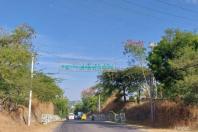
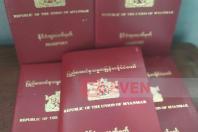
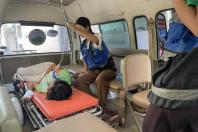
![[Photo credit: Shwe Yoathlwar charity group]](https://elevenmyanmar.com/sites/news-eleven.com/files/styles/most_read_img/public/news-images/plaza.jpg?itok=v6Gn0YGX)

